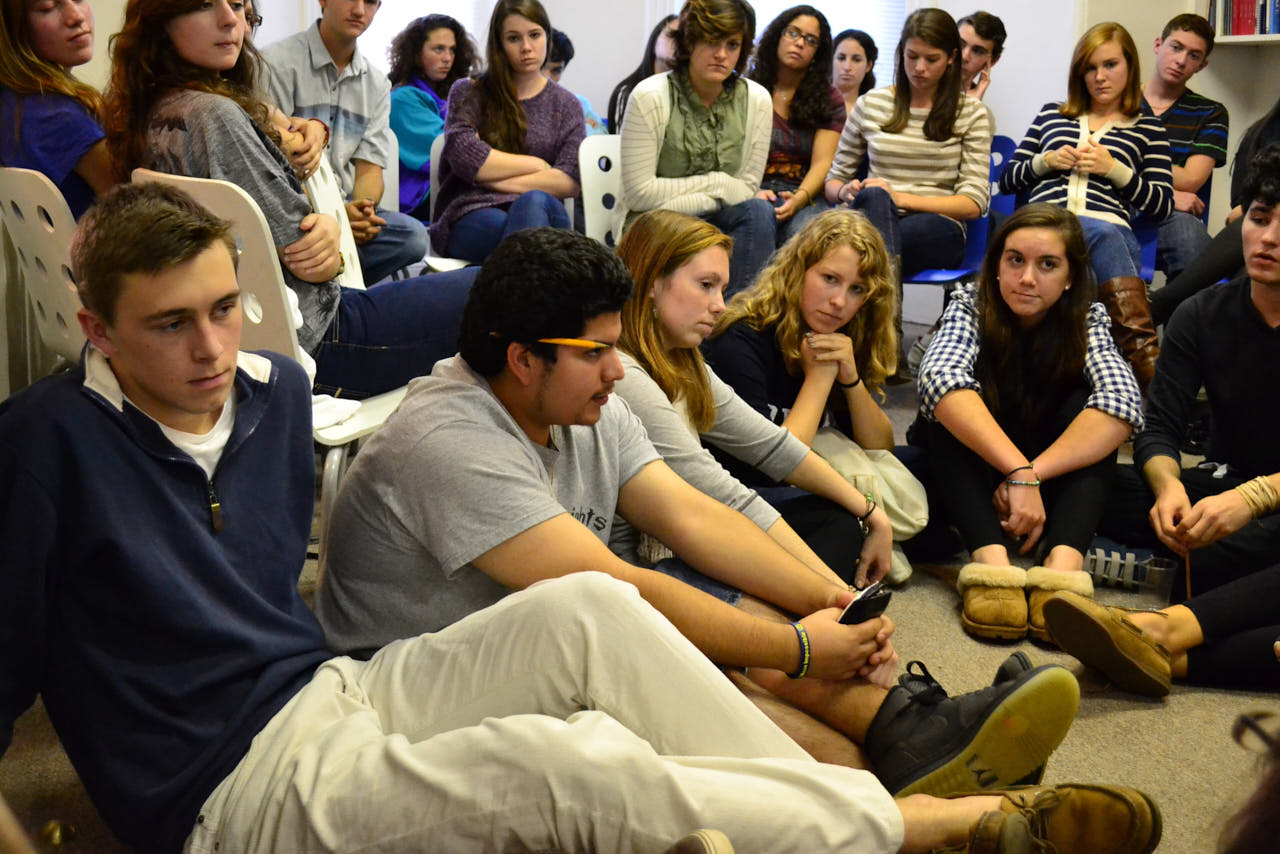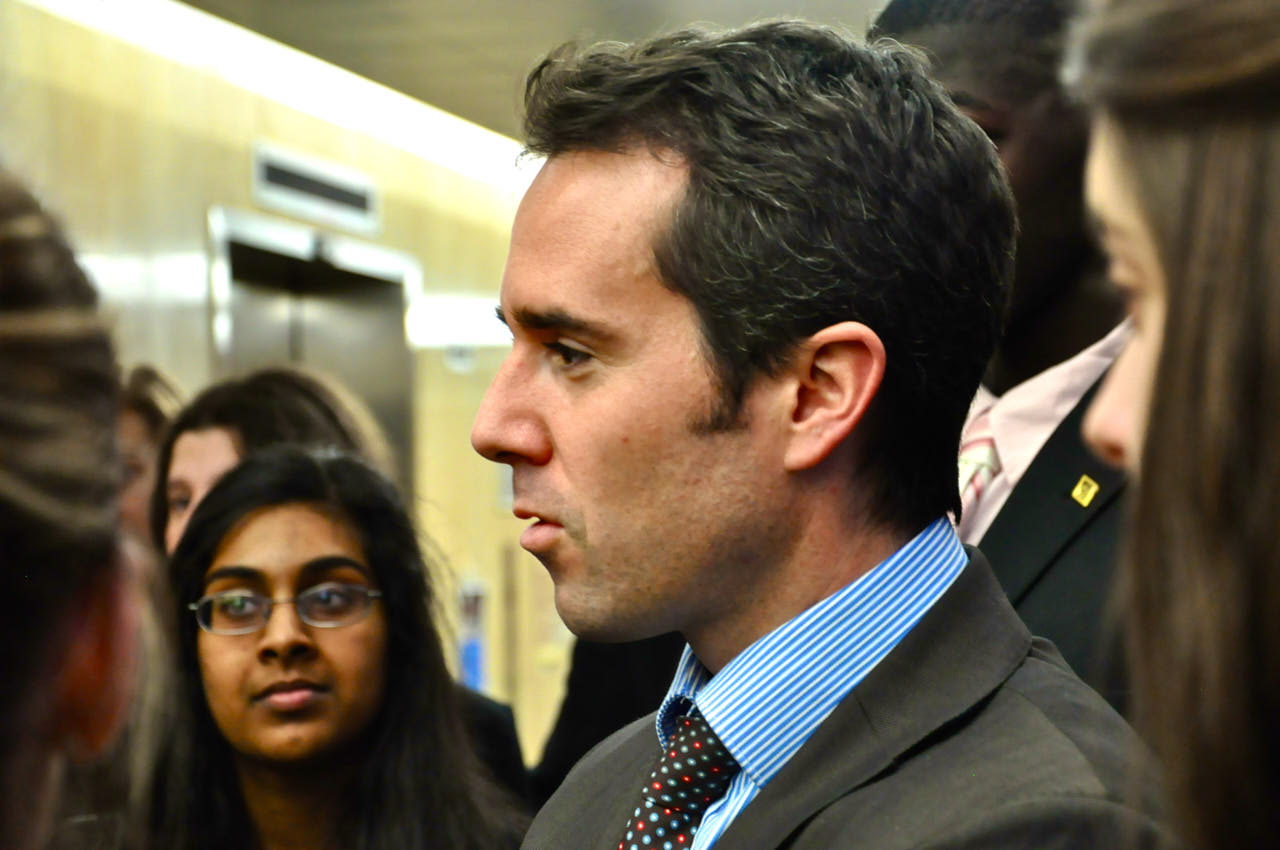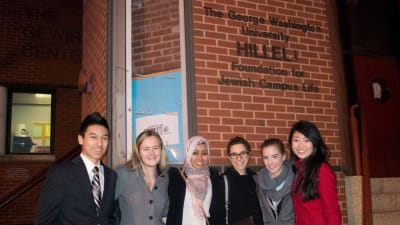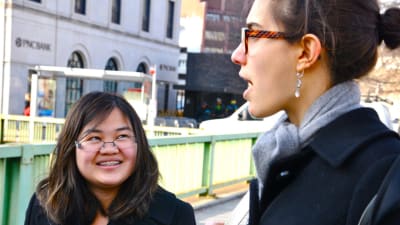Genocide Case Study: the Holocaust Museum, Carl Wilkens, Ambassador James Kimonyo, and Deputy Assistant Secretary of State Dan Baer
The PBS documentary “Ghosts of Rwanda” has become something of a right of passage for SEGL students. Shown in preparation for our second case study of the semester, the film challenges students with difficult imagery and what many observers call the U.S. government’s failure to respond.The discussion that follows is intense, somber, and, ultimately, hopeful. It also helps crystalize for many students the reason they are in DC at SEGL. (You can watch the film online here.)

This semester’s cohort took particular care to respond to “Ghosts of Rwanda” last Friday evening, and went to bed in a reflective mood. The next morning, we met (via videoconference) with SEGL Honorary Leadership Council member Carl Wilkens, the only American to stay behind during the 1994 Rwandan genocide. Why did he decide to stay? What did he think of the United States government when it chose not to intervene? How did the experience impact his faith? Why is there evil in the world, and how can we combat it? As an SEGL board member who sat in on the discussion said afterward, “They weren’t really discussing Rwanda. They were discussing the essential questions of existence.” Wilkens, who has spoken with each SEGL group since our founding, provided a hopeful message sharing ways to prevent genocide and the thinking that leads to it. (Later this semester we will also meet with Laura Lane, another favorite SEGL speaker, who was in charge of evacuating all the other Americans from Rwanda in 1994. Juxtaposing Wilkens and Lane is always poignant, and we look forward to sharing how students receive her visit.)
On Wednesday we traveled to the U.S. Holocaust Memorial Museum for a special tour before the museum opened to the public. (Special thanks to Jesse Nickelson, SEGL trustee and Director of Community and Youth Initiatives at the museum, for arranging this memorable visit.) Among other things, the tour allowed students to compare the causes of and responses to the genocides, and to reflect on current situations that many have called by the same name.

After a brief lunch out in Dupont Circle, the students walked two blocks up New Hampshire Avenue from our Academic Building to the Rwandan Embassy. There they met with Ambassador James Kimonyo and his Deputy, Justine Niyibizi Mbabazi (a genocide survivor), who shared personal stories as well as thoughts on the U.S. response and the way forward.
On Friday, we made our way to the State Department for a visit with Deputy Assistant Secretary of State Dan Baer, whose portfolio includes all human rights issues in Africa. The goal of the meeting was to allow students to connect the past with the present and future. What is the current policy toward Rwanda? Toward Darfur? Toward other human rights hot spots?

How does the government address such challenges? Baer provided helpful background on how the State Department approaches human rights issues, how he collaborates with other government officials to determine policy, and how the Administration is addressing several current challenges. The students generated an interesting discussion about the line between personal morals and legal/professional responsibilities. Had Baer ever had to enforce a law or policy with which he disagreed? Would he resign if the government asked him to follow a policy that he opposed? We also heard from Katharine Kendrick, a Program Analyst for Internet Freedom at State; Kendrick was able to share a lot of information about the role of social media in promoting human rights and democracy overseas.
This week we study Human Rights in Syria and present speeches to Lissa Muscatine, former chief speechwriter to Hillary Clinton. We will also hear about the Obama campaign from the woman in charge of winning the state of Virginia and about the Republican Presidential candidates from a panel at the American Enterprise Institute. More on that soon!
Special thanks to students Hebah and Kate for their contributions to our photographs!











